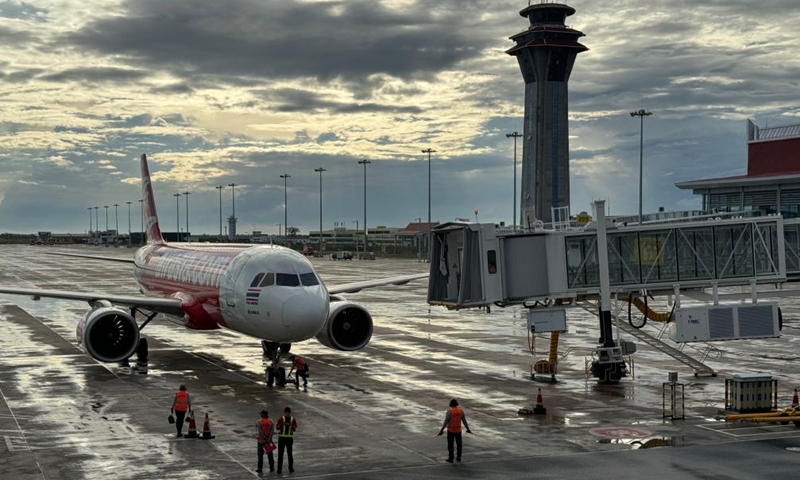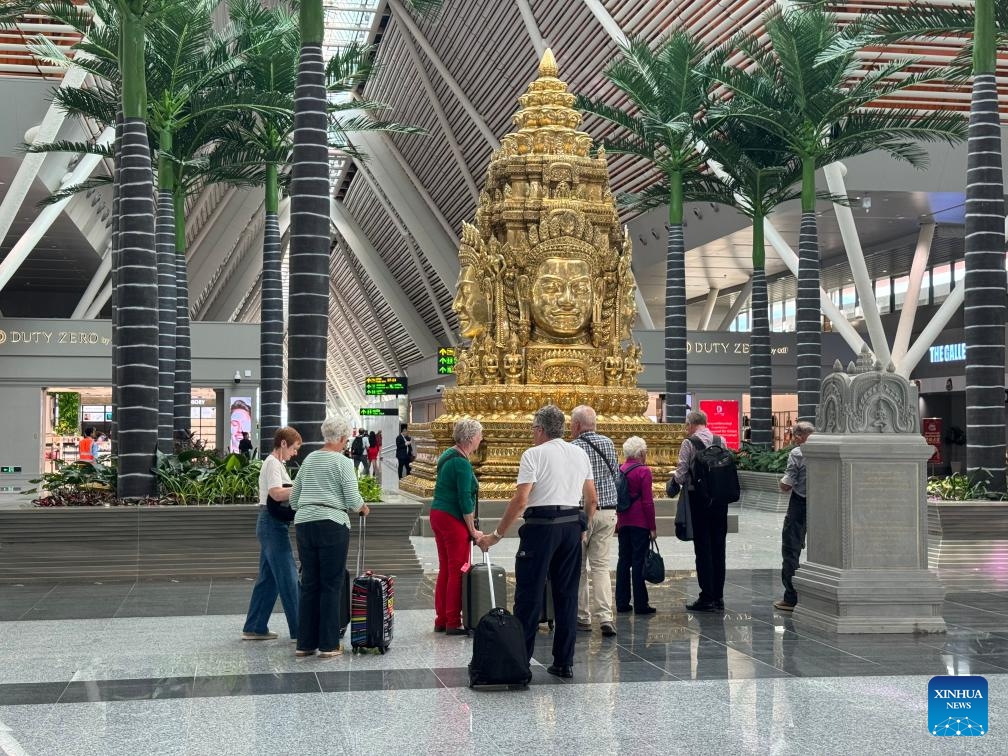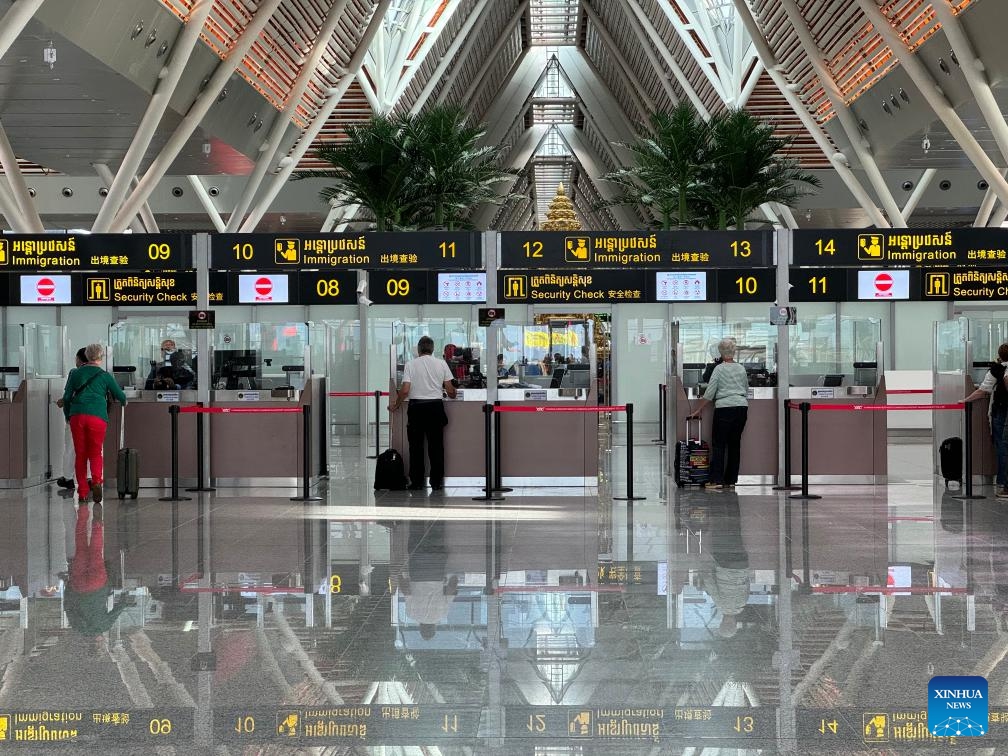
A passenger plane arrives at the Siem Reap Angkor International Airport (SAI) in Siem Reap province, Cambodia, Nov. 16, 2023. Chinese-invested Siem Reap Angkor International Airport (SAI) in northwest Cambodia's Siem Reap province was officially inaugurated on Thursday, raising hope for the recovery of the kingdom's tourism industry. (Photo: Xinhua)

Passengers wait for their flights at the Siem Reap Angkor International Airport (SAI) in Siem Reap province, Cambodia, Nov. 16, 2023. Chinese-invested Siem Reap Angkor International Airport (SAI) in northwest Cambodia's Siem Reap province was officially inaugurated on Thursday, raising hope for the recovery of the kingdom's tourism industry.(Photo: Xinhua)

Passengers go through security check at the Siem Reap Angkor International Airport (SAI) in Siem Reap province, Cambodia, Nov. 16, 2023. Chinese-invested Siem Reap Angkor International Airport (SAI) in northwest Cambodia's Siem Reap province was officially inaugurated on Thursday, raising hope for the recovery of the kingdom's tourism industry.(Photo: Xinhua)
Chinese-invested Siem Reap Angkor International Airport (SAI) in northwest Cambodia's Siem Reap province was officially inaugurated on Thursday, raising hope for the recovery of the kingdom's tourism industry.
Cambodian Prime Minister Hun Manet presided over the inauguration ceremony, which was attended by more than 1,000 people.
Speaking at the event, Hun Manet said the airport was launched as Cambodia and China celebrated the 65th anniversary of diplomatic relations and China marked the 10th anniversary of the BRI's inception.
"The Siem Reap Angkor International Airport is the fruit of peace and is the new outstanding achievement of the ironclad friendship between Cambodia and China," he said.
The Cambodian leader said the SAI is a 4E-level international airport that can accommodate larger planes, including those used on global long-haul routes.
"It will connect Cambodia to the world, and we hope new international airlines, especially Chinese ones, will spread their wings to Siem Reap province," he said.
Hun Manet said the airport will give a big boost to the tourism sector in Siem Reap and local residents will directly benefit from it.
Invested by the Angkor International Airport Investment (Cambodia) Co., Ltd., an affiliate of China's Yunnan Investment Holdings Ltd., the 700-hectare airport was designed in traditional Cambodian architecture style.
With a 3,600-meter-long runway, the SAI is currently Cambodia's biggest airport and is the main gateway to the UNESCO-listed Angkor Archaeological Park, one of the country's most popular tourist attractions.
Mao Havannall, minister in charge of the Cambodia's State Secretariat of Civil Aviation, said the SAI will be able to handle 7 million air passengers per annum from 2024 and up to 12 million passengers annually from 2040.
"It will give a boost to the kingdom's economic growth, promote aviation, tourism and investment, and contribute further to poverty reduction," he said.
"We are confident that this new airport will become a bridge connecting Cambodia to a wider world," he added.
According to Havannall, the airport currently employs a total of 447 people, including 82 Chinese nationals and 365 Cambodians.
Kin Phea, director general of the International Relations Institute of Cambodia, a think tank under the Royal Academy of Cambodia, said the SAI marks a significant development in Cambodia's aviation industry.
"It will facilitate access to the Angkor Archaeological Park, improve infrastructure, and facilitate trade and investment," he told Xinhua.
Phea said the airport also improves living standards, creates jobs, facilitates the movement of people and goods, and provides access to education and healthcare for Cambodians, making it a symbol of the country's progress in the aviation and tourism sectors.
The SAI is located in Sotr Nikum district, about 40 km from the Angkor park and more than 50 km from Siem Reap provincial town.
